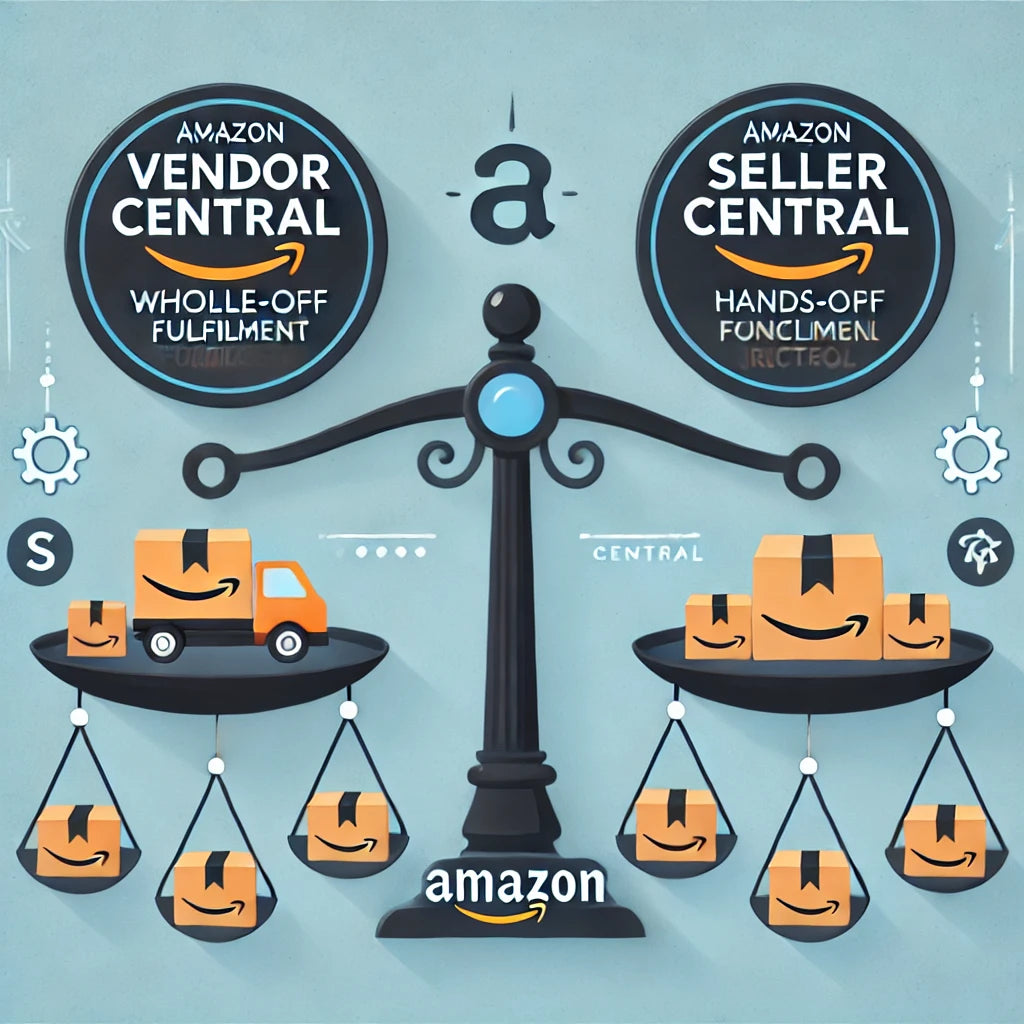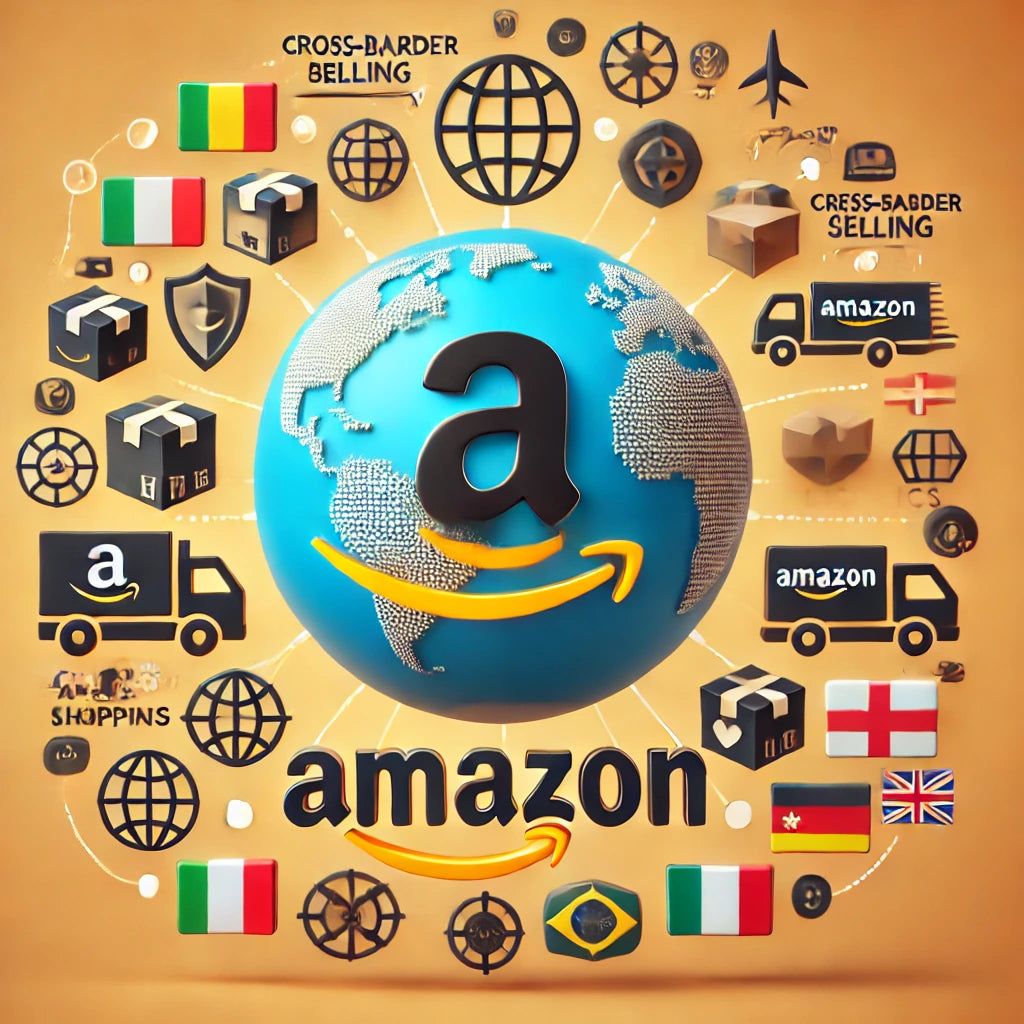STEVE, company.com
The Benefits of Amazon Brand Registry and How to Enroll
Navigating the vast and often chaotic world of Amazon selling can feel like trying to herd cats. But fear not! Enrolling in Amazon Brand Registry is your trusty lasso, ready to wrangle in those pesky counterfeiters and boost your brand’s visibility.
With over 15 years of experience dodging the pitfalls of the Amazon marketplace, I’ve seen firsthand how this program can turn the tide in your favor. Buckle up, and let’s dive into the benefits and the step-by-step process of enrolling in Amazon Brand Registry.
1. Comprehensive Brand Protection: Think of Amazon Brand Registry as your brand’s personal bodyguard. It’s there to ensure your intellectual property stays safe from copycats.
- Trademark Protection: By registering your trademark, you get the power to thwart unauthorized sellers trying to pass off their goods as yours. It’s like having a superhero cape, but for your brand.
- Reporting Violations: The process is straightforward and efficient, allowing you to quickly report and resolve intellectual property violations. No more sleepless nights worrying about counterfeiters.
2. Enhanced Content Creation: Ever wish your product listings could look as good as they do in your dreams? With A+ Content, they can!
- A+ Content Benefits: Use high-quality images, comparison charts, and enhanced text placements to create a richer shopping experience. It’s like giving your listings a spa day, and trust me, customers love a good makeover. For more tips on leveraging A+ Content, check out How to Leverage Amazon A+ Content for Higher Sales.
3. Custom Brand Stores: Imagine having a storefront that’s all about your brand, without the clutter of competitors. That’s what Amazon Brand Stores offer.
- Design Your Storefront: Create a cohesive shopping experience that showcases your entire product range. It’s your chance to strut your stuff and make a lasting impression. A well-designed storefront can help build brand identity and encourage repeat purchases.
4. Access to Advanced Marketing Tools: With great power comes great responsibility—and some pretty nifty marketing tools.
- Sponsored Brands and More: Registered brands can access Sponsored Brands, Sponsored Display Ads, and Amazon Attribution. These tools give you more visibility and detailed insights into your marketing efforts, helping you fine-tune your strategies and outshine the competition.
5. Improved Search Tools: Finding infringing content is like looking for a needle in a haystack. Luckily, Brand Registry gives you a metal detector.
- Advanced Search Capabilities: Use images, keywords, and ASINs to search for content that matches your brand’s intellectual property. Spotting and reporting infringing products has never been easier.
6. Amazon Brand Analytics: Data geeks, rejoice! Brand Registry provides access to Amazon Brand Analytics, a treasure trove of insights into customer behavior, search terms, and market trends.
- Data-Driven Decisions: Use these insights to refine your product listings, marketing strategies, and overall business approach. It’s like having a crystal ball, but with less ambiguity.
Personal Experience and Advice: When I first enrolled in Amazon Brand Registry, it felt like upgrading from a tricycle to a sports car. The enhanced tools and protections made a world of difference. My advice? Don’t wait until you’re knee-deep in counterfeit complaints to enroll. Be proactive—your future self will thank you.
Step-by-Step Enrollment Guide:
- Ensure You Have a Registered Trademark: This is the golden ticket. Without it, you can’t get into the Brand Registry club.
- Sign In to Amazon Brand Registry: Head to the Amazon Brand Registry website and sign in with your Seller Central credentials.
- Enroll Your Brand: Provide your brand name, trademark number, and other required information. Amazon will verify your details.
- Utilize the Tools: Once enrolled, explore the new tools and features at your disposal. Customize your storefront, create A+ Content, and dive into the analytics.
Conclusion: Amazon Brand Registry is more than just a safety net; it’s a springboard to elevate your brand. From protecting your intellectual property to enhancing your product listings, the benefits are plentiful. So, throw on your metaphorical superhero cape and get started on enrolling today. Your brand deserves it.
A Word of Advice: Remember, success on Amazon is a marathon, not a sprint. Stay vigilant, keep learning, and don’t be afraid to tweak your strategies. And hey, if all else fails, just remember to keep a sense of humor about it. After all, even the best of us have had a product launch that felt like a goat rodeo
Related articles
Amazon Vendor Central vs. Seller Central: Which is Right for You?
STEVE | 25 Jun 2024Deciding between Amazon Vendor Central and Seller Central is a crucial step for your Amazon business strategy. Each platform has its own set of benefits and challenges. With over 15 years of experience selling on Amazon, I’ve had the opportunity to work with both. In this guide, I’ll break down the key differences between Vendor Central and Seller Central to help you decide which is the best fit for your business. 1. Understanding Vendor Central: Amazon Vendor Central is an invite-only platform where you sell your products directly to Amazon, who then sells them to customers. Pros: Wholesale Model: You sell your products in bulk to Amazon, which can lead to large purchase orders and immediate cash flow. Marketing Support: Vendors often receive marketing support and promotions from Amazon. Hands-Off Fulfillment: Amazon handles all aspects of fulfillment, including shipping and customer service. Cons: Less Control: Limited control over pricing, inventory, and branding. Margin Pressure: Amazon negotiates wholesale prices, which can be lower than what you might achieve through Seller Central. 2. Understanding Seller Central: Amazon Seller Central allows you to sell directly to consumers on the Amazon marketplace, either using Fulfillment by Amazon (FBA) or fulfilling orders yourself. Pros: Greater Control: You have full control over pricing, inventory, and branding. Higher Margins: Potential for higher margins as you set your own prices. Flexibility: More flexibility in managing your sales strategies and product listings. Cons: More Responsibilities: You handle inventory management, pricing strategies, and customer service. Fulfillment Challenges: If you’re not using FBA, you must manage shipping and returns. 3. Key Differences to Consider: Pricing Control: Seller Central gives you more control over pricing, allowing you to adjust based on market conditions. Vendor Central’s wholesale model means Amazon sets the retail price. Branding: Seller Central offers more opportunities for branding through enhanced content and custom storefronts. Vendor Central has limited branding options. Fulfillment: Vendor Central handles all fulfillment and customer service, making it a hands-off process for vendors. Seller Central requires you to manage these aspects unless you use FBA. 4. Which Platform is Right for You? The decision between Vendor Central and Seller Central depends on your business goals and resources. Vendor Central is Ideal for: Businesses with high-volume, low-margin products. Those seeking a hands-off approach to fulfillment and customer service. Brands looking for immediate large purchase orders and cash flow. Seller Central is Ideal for: Businesses seeking greater control over pricing, branding, and inventory. Those willing to manage fulfillment and customer service, or those using FBA. For more on using FBA, check out Using Amazon FBA to Scale Your Business: Pros and Cons. Brands aiming for higher margins and flexible sales strategies. Personal Experience and Advice: When I first started, I used Seller Central because it gave me the control I needed to build my brand. However, as my business grew, I saw the benefits of Vendor Central for larger volume sales. My advice? Start with Seller Central to establish your brand and understand the marketplace dynamics. Once you’re ready for larger orders and want to offload fulfillment responsibilities, consider Vendor Central. Conclusion: Choosing between Amazon Vendor Central and Seller Central depends on your business goals, resources, and the level of control you want over your products. Both platforms offer unique benefits that can help you grow your Amazon business. By understanding the key differences and evaluating your specific needs, you can make an informed decision that aligns with your business strategy
Read moreCross-Border Selling on Amazon: A Comprehensive Guide
STEVE | 25 Jun 2024Expanding your business internationally through Amazon's cross-border selling program can open up a world of opportunities. However, it also comes with its own set of challenges. With over 15 years of experience navigating the complexities of Amazon’s marketplace, I’ve learned the ins and outs of selling across borders. Let’s dive into the strategies and best practices for successful cross-border selling on Amazon. 1. Understanding Market Demand: Before diving into cross-border selling, it’s crucial to understand the demand in your target markets. Market Research: Use tools like Jungle Scout and Helium 10 to assess market demand and competition in different countries. Analyze search trends and customer preferences. Local Trends: Keep an eye on local trends and seasonal variations that may affect demand. This will help you stock the right products at the right time. 2. Compliance and Regulations: Each country has its own set of regulations and compliance requirements. Understanding these is key to avoiding legal issues and ensuring smooth operations. Customs and Duties: Research the customs regulations and duties for each country you plan to sell in. Factor these costs into your pricing strategy. Product Compliance: Ensure your products meet the safety and compliance standards of the target market. This may include certifications, labeling requirements, and safety standards. 3. Fulfillment Options: Choosing the right fulfillment option is crucial for efficient cross-border selling. Fulfillment by Amazon (FBA): FBA is a popular choice for cross-border sellers due to its extensive logistics network and customer service. Amazon handles storage, packaging, and shipping, which simplifies the process. Third-Party Logistics (3PL): If FBA is not a viable option, consider partnering with a reliable third-party logistics provider that specializes in international shipping. 4. Pricing Strategy: Setting the right price for your products in international markets can be challenging. Currency Fluctuations: Monitor currency exchange rates and adjust your prices accordingly to maintain profitability. Competitive Pricing: Research the pricing of similar products in your target market and adjust your prices to stay competitive while covering additional costs like shipping and customs duties. 5. Marketing and Localization: Adapting your marketing strategy to fit the local culture and language can significantly impact your success. Localization: Translate your product listings, marketing materials, and customer service communications into the local language. Consider cultural nuances to ensure your message resonates with local customers. Advertising: Utilize Amazon’s advertising tools to target customers in your chosen markets. Sponsored Products and Sponsored Brands can help increase visibility and drive sales. Personal Experience and Advice: When I first ventured into cross-border selling, I underestimated the importance of localization. Adapting my listings and marketing strategy to fit the local culture and language made a significant difference in my sales. My advice? Invest time and resources into understanding and adapting to each market you enter. Conclusion: Cross-border selling on Amazon offers immense growth potential, but it requires careful planning and execution. By understanding market demand, complying with local regulations, choosing the right fulfillment option, setting a competitive pricing strategy, and localizing your marketing efforts, you can successfully expand your business internationally. A Word of Advice: Remember, patience and persistence are key to successful cross-border selling. Stay informed about market trends, continuously optimize your strategy, and be prepared to adapt to new challenges. And don’t forget to enjoy the journey—exploring new markets can be an exciting adventure
Read more

